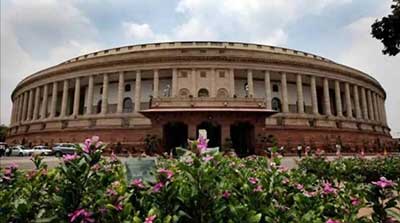Date: 19/12/2022
Relevance: GS-2: Parliament and State legislatures—structure, functioning, conduct of business, powers & privileges and issues arising out of these.
Key Phrases: Private Member’s Bill, Women’s Reservation, Representation, Women, Democracy, Legislators, Rajya Sabha, Lok Sabha.
Context:
- The number of women elected in recently conducted Gujarat and Himachal Pradesh assemblies’ election is low.
- Gujarat elected just 8 percent of women legislators in its 182-member assembly.
- Himachal Pradesh, where every second voter is a female, has elected 67 men and only one woman.
Key Highlights:
- The national average of women in all state assemblies remains around 8 per cent.
- India ranks 144 out of 193 countries in the representation of women in parliament according to Inter-Parliamentary Union’s latest report.
- There are just 14.9 per cent women elected to the Lok Sabha. Among India’s immediate neighbors, India falls behind Bangladesh, Pakistan, and Nepal.
Tracing the History of Women’s Reservation Bill:
- The Women’s Reservation Bill was first introduced in 1996 by the Deve Gowda government. It was referred to a Joint Parliamentary Committee which presented its report in December 1996. However, the Bill lapsed with the dissolution of the Lok Sabha.
- PM Vajpayee’s NDA government reintroduced the Bill in the 12th Lok Sabha in 1998. Yet again, it failed to get support and lapsed.
- In 1999, the NDA government reintroduced it in the 13th Lok Sabha. Subsequently, the Bill was introduced twice in Parliament in 2003.
- In 2004, the UPA government included it in the Common Minimum Programme that said: “The UPA government will take the lead to introduce legislation for one-third reservations for women in Vidhan Sabhas and in the Lok Sabha.”
- In 2008, the government tabled the Bill in the Rajya Sabha so that it does not lapse again. On March 9, 2010, the Bill was passed in the Rajya Sabha with 186-1 votes after immense debate. History was created. The Bill, then, reached the Lok Sabha where it never saw the light of day. When the House was dissolved in 2014, it lapsed again.
About Private Member's Bill:
- A bill introduced by a member other than a minister is termed a private member's bill.
- Drafting of the bill is the sole responsibility of the concerned Member of Parliament.
- Usually introduced and discussed on Fridays and requires one month’s prior notice.
- Admissibility of the bill is decided by the Chairman in the case of Rajya Sabha and the Speaker in the case of Lok Sabha.
History of Private Member’s Bills in India:
- As of now 14 private member’s bills have become an Act since 1950.
- Important legislations among them include the 26th amendment (abolition of privy purses) and the 61st amendment (voting age from 21 to 18).
- Although, no private member’s bill has become an Act since 1970.
- The last one was the Supreme Court (Enlargement of Criminal Appellate Jurisdiction) Bill, 1968
Highlights of Women’s Reservation Bill:
- The Constitution (One Hundred and Eighth Amendment) Bill, 2008 seeks to reserve one-third of all seats for women in the Lok Sabha and the state legislative assemblies. The allocation of reserved seats shall be determined by such authority as prescribed by Parliament.
- One third of the total number of seats reserved for Scheduled Castes and Scheduled Tribes shall be reserved for women of those groups in the Lok Sabha and the legislative assemblies.
- Reserved seats may be allotted by rotation to different constituencies in the state or union territory.
- Reservation of seats for women shall cease to exist 15 years after the commencement of this Amendment Act.
Why is the Women’s Reservation Bill required?
- Lower Women’s participation: It is reported that the participation of women in the lower house of parliament, that is, the Lok Sabha and all other state assemblies, is meagre compared to men. To promote women as ministers, the bill was laid before the parliament.
- Fewer opportunities at a higher level: It is experienced that women working in the positions of Panchayati Raj have worked effectively. Due to high competition, they cannot fight in the election with men. Reserving seats will allow women to stand with men in the elections or get nominated.
- Gender discrimination: In some parts of India, the area is dominated by men. In those areas, women cannot even think of fighting elections. The scheme will help promote empowerment.
- Political discrimination: When a man is given more opportunities than a woman, this is called “discrimination” in politics. Currently, the number of men in politics is greater than that of women. If women enter politics, they will have a voice regarding other women, children, and the topics with which they are associated.
Conclusion:
- So far only two regional political parties in India – Odisha’s Biju Janata Dal (BJD) and West Bengal’s Trinamool Congress (TMC) have reserved seats for women for election candidatures.
- Women have historically suffered due to systemic inequality and barriers. Without a gender quota, women’s representation will remain marginal causing a massive deficit in our democracy.
- A Private Member’s Bill is demanding women’s reservation in all legislative bodies — lower and Upper Houses, and also reserved seats within that for women who come from historically marginalized communities. It is a single step that will if passed, immediately ensure at least 33 percent representation of women.
Source: Indian Express
Mains Question:
Q. The time has arrived that women get their due representation in the political arena. Analyze in the backdrop of the women’s representation bill. (250 words)






















